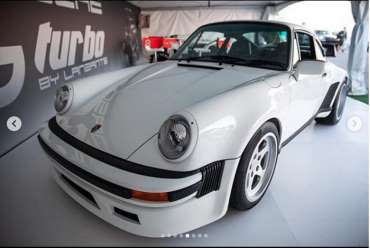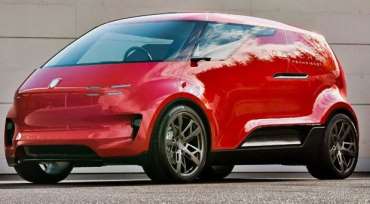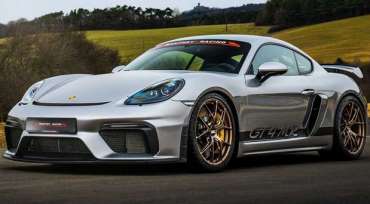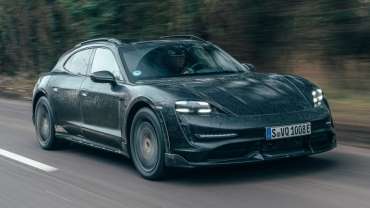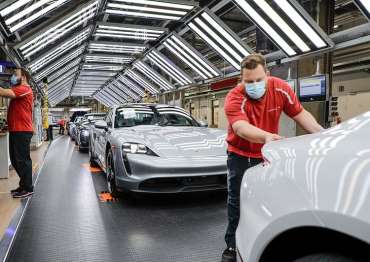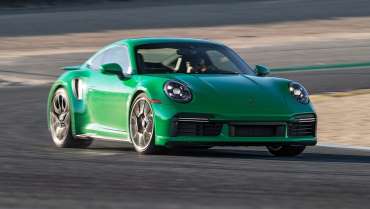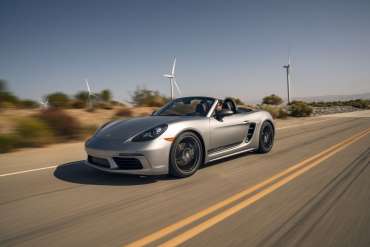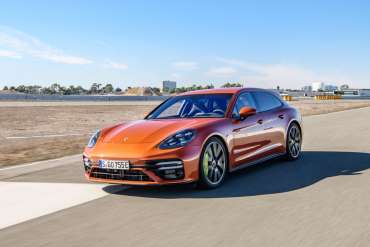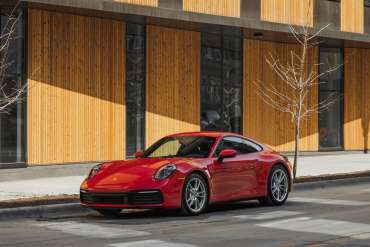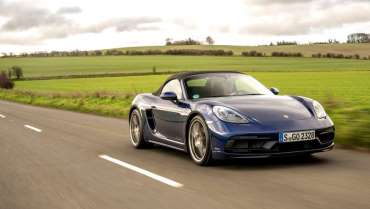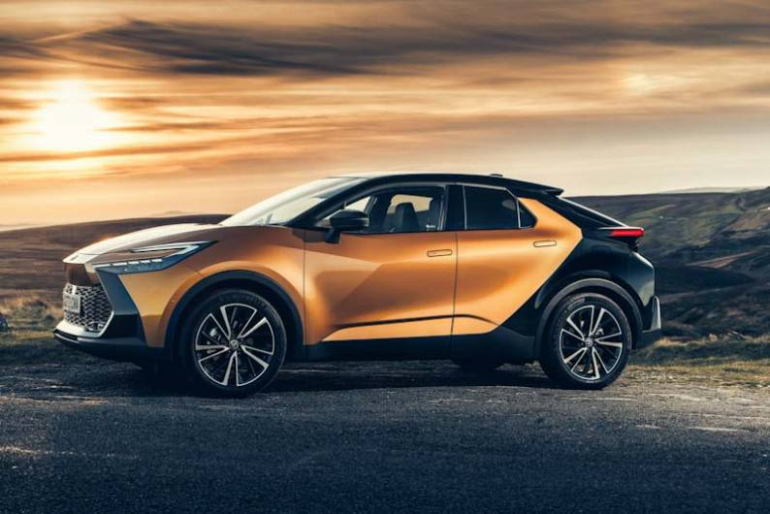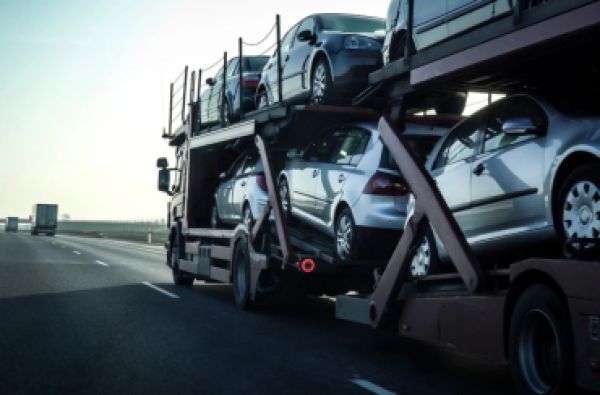Displaying items by tag: Porsche
Madness called Porsche 911
But really crazy. And absolutely.
You don't believe it?
Take a look at the text…
Singer Vehicle Design… Magnus Walker… Kaege… Rauh Welt Begriff (or RWB)
These are all companies that base their games and games on a single car. The legendary "elfer" or more simply, the Porsche 911.
It is therefore worth concluding that fans of this legendary model from Zuffenhausen will never be short of choice - especially if they have deep pockets and thick wallets.
But all of the above "resto-moderi" have one minor problem: they have nothing to do with Formula 1. At least not directly. And that is why this text is a car that, according to everything, in a series of a total of 11 copies should overshadow all the above companies and their works.
Yes really.
For those of a slightly older production date, for whom Porsche is not just a mere adoration of technology and design stubbornness, Formula 1 will be a completely natural link to this famous brand. The same goes for driving legends made up of Niki Lauda, Alain Prost, Keke Rosberg, Steve Nichols and John Barnard as the constructors and Ron Dennis in the form of the eternal boss whose red and white cars practically destroyed the competition on tracks around the world within the craziest octane circus on the world.
And thus Marlboro as the main sponsor, and McLaren and Tag as the signatories of the car and engine technology form the second part of the legend of MP4 / 2 and MP4 / 3, ie the legendary cars from the famous and interesting history of Formula 1.
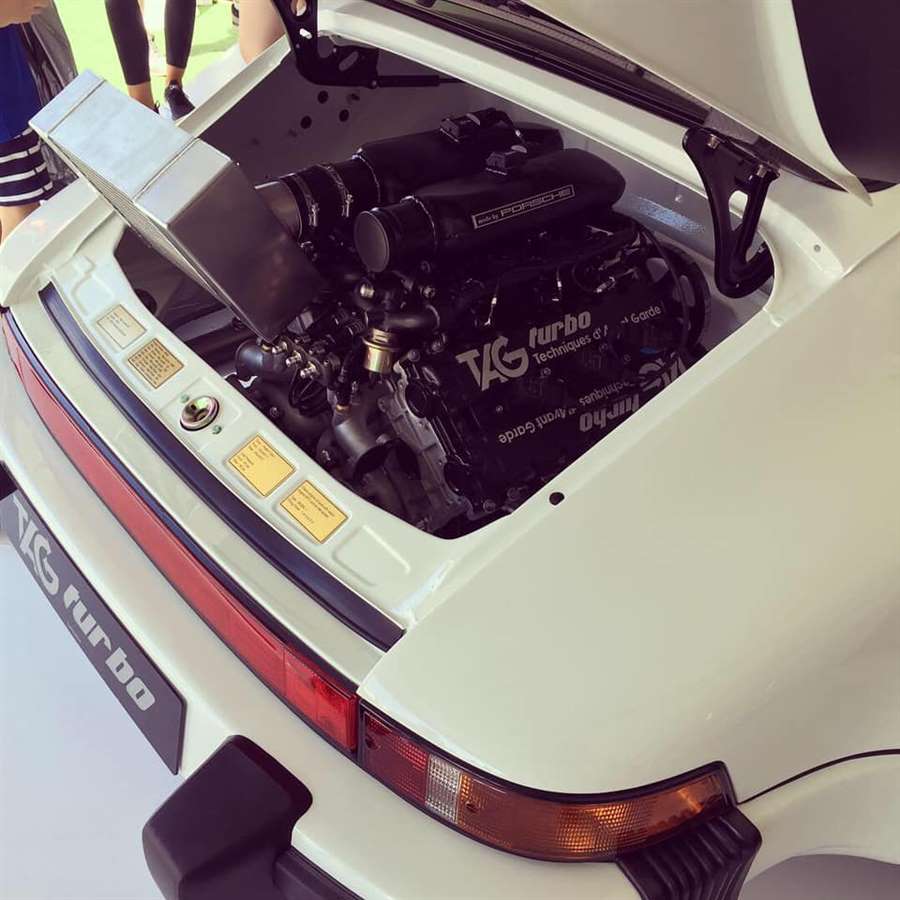
Do you see in which direction this story is going?
Basically, when McLaren is mentioned in public, the link to Porsche is not lacking. Because in the world of Formula 1, it was these two names that turned out to be Siamese twins. Admittedly, today McLaren and Porsche stand on diametrically opposite sides of the car world and make each other a competition, but that doesn’t matter now.
What it is, however, is the third company to decide to merge myth and legend in real time.
The company is called Lanzante and has been associated with McLaren in one way or another (read: in the real world and as part of the one that involves racing) for decades.
The myth is called the Porsche 911 Turbo, and the legend is still in its infancy, although it has been present for many years.
To elaborate…
Sometime in the mid-1980s, a disturbed team in a Porsche came up with the idea to install a real engine from the then Formula 1 car in a "simple" 930 Turbo.
It is a V6 engine with only 1.5 liters of volume, which in its qualifying edition far exceeded the figure of 1,000 horsepower.
akle, it really was a real engine that was jointly signed by Porsche and TAG, and with which Niki Lauda, Alain Prost and a few other F1-legends broke lap records wherever they appeared.
For many years this 930 Turbo was just a rumor. A story with which fans of the Porsche surname scared Ferrari lovers. An urban legend like Babaroga, Babadooka or that little shaggy one who comes out of the well every now and then and kills Japanese VHS hipsters. But a few years ago, this Porsche confirmed the legend in reality within the showrooms of McLaren's surgical clinic in Woking. And surprisingly, from then until today, there have been no violent reactions to this mobile disease.
… And so on until today, when this Porsche "Widowmaker" from McLaren gets permission to kill, and from the company Lanzante and the possibility of moving from the domain of epic songs to the reality that surrounds us. Because Lanzante plans to shove the TAG-Porsche_F1-monstrous under its tail and produce a total of 11 copies of this "elf" with the God complex.
By all accounts, the car world could soon get one of the most recognizable models of all time combined with one of the sickest engines of all time. And with that, the already iconographic Porsche 930 Turbo could truly become the most special Porsche car of all time.
By doing so, greats and geniuses from RWB, Singer and others could fall into the shadows. Because given the 1,000+ horses and the screaming of tiny pistons from the V6 engine at as much as 9,000 rpm, it wouldn’t be wrong to conclude that sicker than this just doesn’t go.
So even though no one has a clue about the actual performance of this weird white monster at the moment, it doesn’t really matter that much. Because nowadays to produce something like that is a display of a kind of madness.
It is sociologically incorrect. Politically as well, and not to mention ecology and similar branches that people emphasize. And that's why this Porsche 911 Turbo is simply a white whale, ie a mythical animal sung as part of literary works, and one of those oversized organisms that many still fear today, but it is still more people appreciate.
And we already adore him because of his very existence!
Porsche has spoken out about the idea of an electric minivan
Porsche made Vision Renndienst back in 2018, and due to the popularization of electric cars, many wondered if a new surprise from Porsche would follow.
The answer was given by Porsche itself for Autoblog. They stated that the company will not embark on new excursions in terms of city cars, even if they look like a concept minivan.
Vision Renndienst
According to Index.hr, Porsche's head of global design Detlev von Platen stated that he would only participate where “it is possible to define a sports vehicle.” It is a pity because this concept would be interesting to see on the road.
Let us remind you, Renndienst was designed by Porsche in 2018, and it was shown to the public for the first time at the end of last year. The driving position is central, as in the McLaren F1, but it can carry six people.
Manthey Porsche 718 Cayman GT4 MR
Manthey Racing is one of the most prominent names in the world of racing on the Nurburgring Nordschleife, and is also known for tuning Porshe cars. The new creation is the 718 Cayman GT4 MR, which is focused on improving racing performance.
Manthey has made minor changes to the body of the 718 Cayman GT4, there is now a set of protective grilles for air intakes, air deflector, new spoiler mounts and the like. The car received a set of forged wheels with "Y" shaped arms and a gold finish.
The suspension and brakes were improved, but the engine remained the same. It is a 4.0-liter 6-cylinder boxer engine that delivers 414 hp and 419 Nm of torque. From the 2021 model year, customers can get a 6-speed manual or seven-speed automatic transmission.
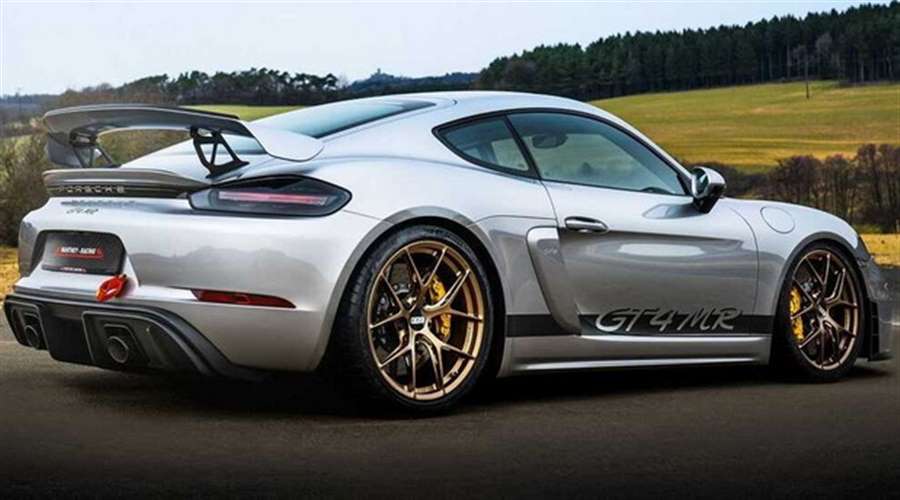
Equipped with a manual transmission, the standard GT4 accelerates from 0 to 100 km / h in 4.4 seconds and reaches a top speed of 303 km / h.
If anyone wants a more powerful Cayman GT4 directly from Porsche, then one should wait because the 718 Cayman GT4 RS has already been seen during testing. It looked aggressive with additional vents and a large spoiler, and its engine reportedly develops more than 500 hp. The Cayman GT4 RS is expected this year.
New Porsche Taycan Cross Turismo prototype review
We get behind the wheel of a prototype version of the new all-electric Porsche Taycan Turbo S Cross Turismo ahead of its official arrival
Porsche’s first foray into the electric car world has gone better than it could’ve imagined. The Taycan has won plaudits the world over, with sales to match. So it makes sense to follow up on the success quickly with the second version of the Taycan, the Cross Turismo.
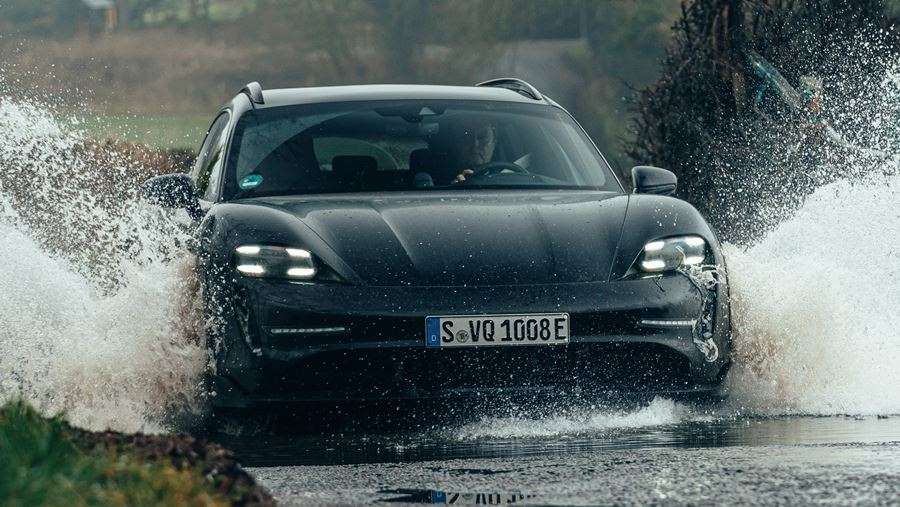
The Porsche Taycan Cross Turismo is set to be unveiled next week, but Auto Express was invited to put a pre-production model through its paces in the UK, weeks before the very car would be unveiled on stage.
There was an added twist to this car – it was in the middle of a world tour taking in the US and the rest of Europe before being taken back to Germany. And although it wore a light disguise, it wasn’t to be cleaned during its trip. So joining the Californian sand was a fair bit of Buckinghamshire mud from our own test drive.
The Cross Turismo features the running gear and much of the bodywork at the front end from the Taycan saloon, but the roof has been extended which, along with the muscular rear three-quarter bodywork, flows into a hatchback tailgate in a very similar way to the Panamera Sport Turismo.
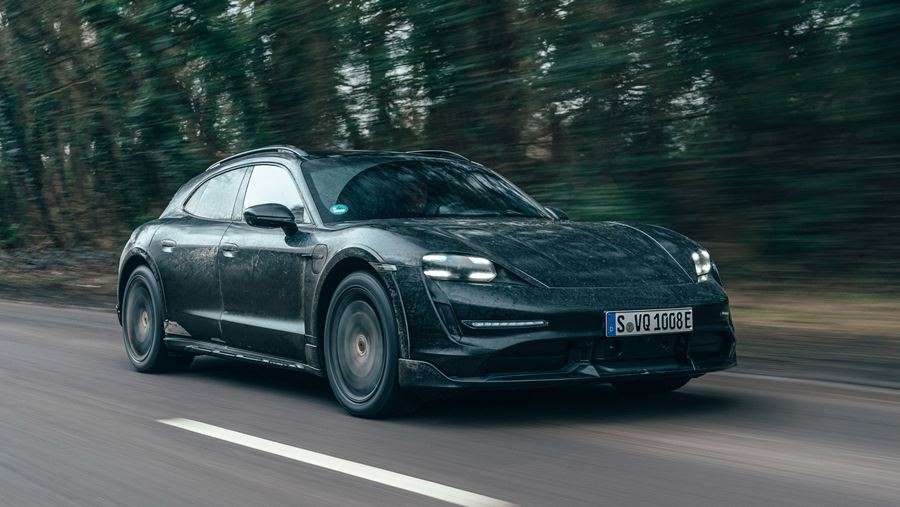
Even behind the dirt and disguise, it’s clear what the car is – as one Panamera Sport Turismo owner spotted on our test drive. He also found out how quick the car is.
Full specs will be revealed on March 4, but the Turbo S model we’re driving uses the same electric motors (delivering 751bhp and 1,050Nm) and 93kWh battery as it’s Taycan equivalent. That means brutal acceleration with an estimated 0-62mph time of just 3.0 seconds, 0-100mph in 6.5 seconds and on to a top speed of around 160mph.
Those figures are slightly down on the saloon, but you’d hardly notice. Even in Normal mode, adjusted by a dial on the steering wheel or via the crystal clear touchscreen, a flex of your right foot will shove you back in your seat as the whine from the electric motors ramps up.
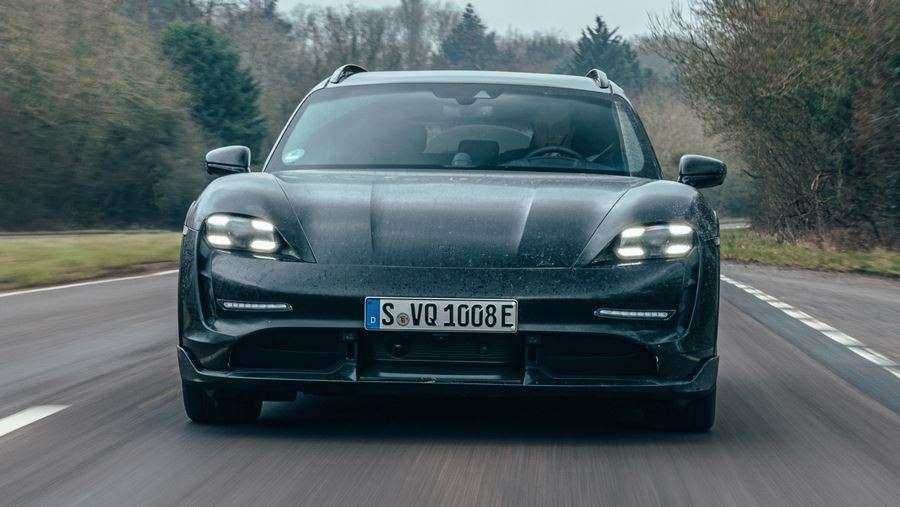
You can choose an electronically generated sound that’s a little like a space ship as part of the Electric Sport Sound pack. It comes on automatically if you select Sport or Sport Plus modes – they also sharpen up responses from the steering, throttle and suspension.
The Cross Turismo has a bit of SUV attitude, too, with Gravel mode, which raises the suspension by 10mm in addition to the 20mm the Cross Turismo gets over the standard Taycan. It doesn’t turn the car into an off-roader, but it does give you a little more confidence to take to a dirt track or tackle a deep ford, as we did.
Four-wheel drive helps, too, but the Taycan has always felt like a proper Porsche to drive; nimble and incredibly responsive for something of its size and weight.

It also rides in a way that we’ve come to expect from Porsche, but which seems to defy physics. Even in the most hardcore modes, you can live with the ride. But for everyday driving in the Normal setting – or Range if you want to try and get close to an expected 250-mile range – it’s almost limo-like, while you’re still able to enjoy the most direct steering yet in an EV and super-tight body control. The best bet is to go for your own blend of settings in Individual mode, but you can throw the car around with confidence and blast out of corners with acceleration that little else can match.
The (fast) limo experience extends to the back where the added ride height makes access a little easier, but it’s best to describe it as snug – more due to the high window line than a lack of space.
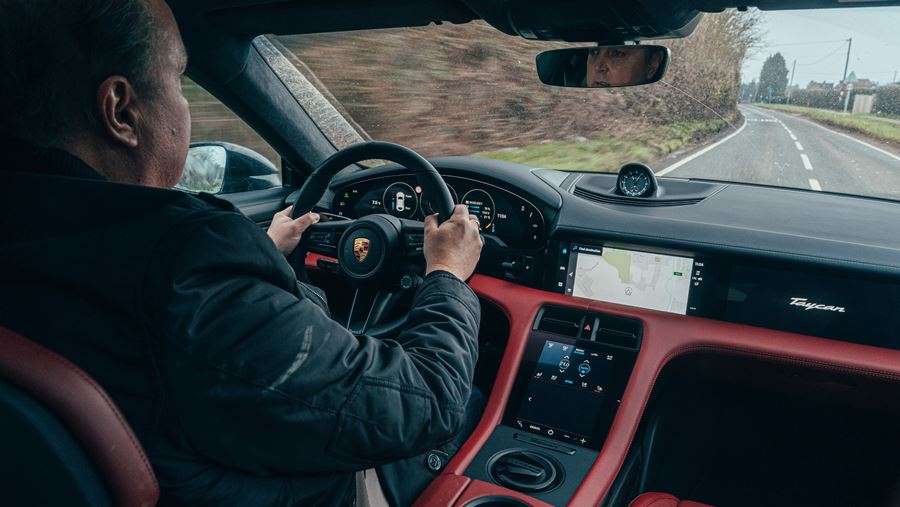
Similarly, style compromises the boot. Again, the hatch improves access, but the sloping rear screen will limit load carrying and won’t endear you to your dog.
Although this was a pre-production model, there was nothing pre-production about the build quality. Porsche cabins are as good as they get these days, with strong tech that includes a digital instrument display, two central touchscreens and even one in front of the passenger. The only rattles from this well-travelled pre-prod model came from grit coming lose from under the car – it felt incredibly solid.
One difference on our pre-production test example was the wheels – you’ll get 21-inches on production cars, ours came on 20s, wisely fitted with all-season tyres.
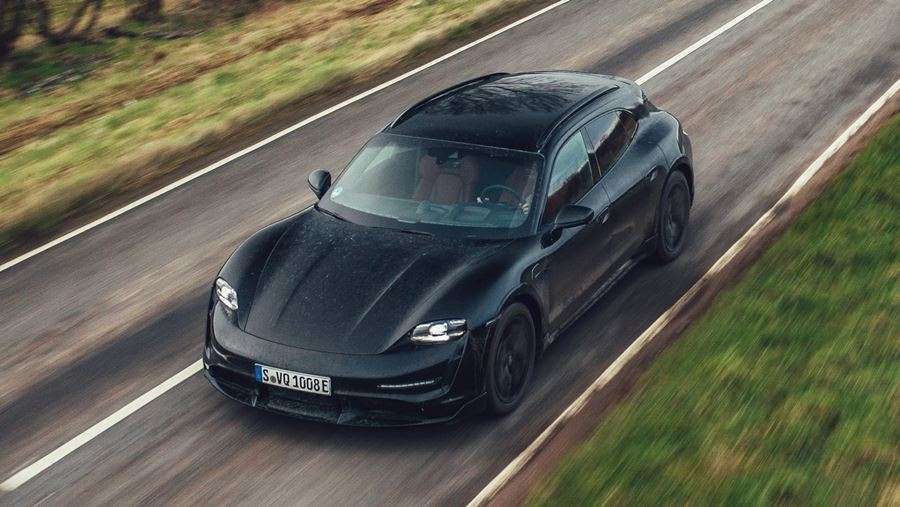
Although the Taycan Cross Turismo gives you plenty more than the saloon, we’re not expecting that to be reflected in the price – we reckon around £140,000 for the range-topping Turbo S – no more than a couple of grand more than its sibling. The rest of the Cross Turismo range should follow the saloon, with the exception that a rear-wheel drive version is not expected.
That won’t bother too many. Our short run in this rather special pre-prod model has proven Porsche will have yet another hit on its hands.
Porsche will not produce cars in China. The “Made in Germany” label still stands
In the recent past, production in China has been associated with a symptom of economy and poor quality. Now it is more and more a manifestation of common sense for producers. For many companies, China is the largest market and the main source of income. However, the director of Porsche believes that it is for this reason that the production of cars of his brand should not leave Germany.
We used to see “Made in China” labels on plastic toys and clothes. Over time, it began to appear on electronics and other, increasingly complex everyday objects. Finally, the inevitable came: cars made in China appeared.
They drive mostly on Chinese roads all the time, but some of them are already coming to Europe. The MG brand is doing well in the once native British market (today it has four factories, all in China). Four years ago, the first Volvo S90 produced in Daqing arrived in Bosnia and Herzegovina, today the only place to produce this model.
With the development of electromobility, there will be more and more such cases. There are already more and more of them. Part of the production of the Tesla Model 3 goes to Europe from the new Giga factory near Shanghai. The new electric BMW iX3 is also coming from China. It is in Tiexi, not Munich, that BMW currently has its largest factory and development center.

BMW is no exception among German premium brands. Last year, Daimler CEO Ola Kallenius announced the freezing of Mercedes factories in Germany and focused on investing in other parts of the world, mainly China. In 2020, the group sold half of its Smart shares to China's Geely, under which microcar production was transferred from France to Hangzhou Bay.
Why doesn't Porsche want factories in China?
German carmakers have a bitter-sweet relationship with China. Even if they don’t want to, they are very addicted to it. The coronavirus pandemic only strengthened this dependence as the Chinese market began to recover faster than the rest of the world.
This has led to the situation that in 2020, every third car from German manufacturers was sold in this largest car market in the world. In the case of Volkswagen, that was as much as 40 percent of total production. Such dependence on one country is dangerous, but on the other hand, even in Germany itself there are comments that Chinese demand has saved the German economy in recent months.
In addition to this economic climate, some car manufacturers are still not thinking about manufacturing in China. One of them is a Porsche. "It makes no sense for us today to move production from Europe to China," said Oliver Blume, the company's director, in an interview with the Financial Times in February 2021.
On the one hand, this statement may seem contradictory. The data clearly show that such a move makes sense, because the largest number of cars of this brand is sold in China. Just ten years ago, Porsche boasted an annual production of 100,000 cars, while last year almost 90,000 cars of this brand were sold in China alone.
Demand was even higher, but the German company could not cope with it due to difficulties in transporting raw materials due to the imposed sanitary restrictions. The key was that it was a transport from China, which is also a world giant in the production of steel or lithium-ion batteries, the basic components of electric cars.
Porsche has combined many times with production in China. Similar rumors were denied in 2011 by the then head of the company, Matthias Muller. Blume has made similar statements before. There is reason to stick to your decision. Chinese buyers love Porsche due to the fact that it was developed and made in Germany, he revealed at one of the press conferences of this brand in 2019 in Shanghai.
This sentence is key to understanding not only Porsche’s situation, but the entire luxury goods market as well. This is seen in the Chinese passion not only for German cars, but also for French Louis Vuitton bags or Italian Gucci clothing. The value of these goods is largely generated by the country of origin indicated on the label. None of these brands come from China.
That is why Porsche continues to invest in factories in Germany. Recently, 6 billion euros were spent on adapting the central plant in Zuffenhausen to the production of the electric Taycan.
However, there is one Porsche model that can be produced outside of Germany that has little to do with the brand’s tradition - the Cayenne SUV. It is produced in Slovakia, on the same production line with Lamborghini Urus and Bentley Bentayga. It is interesting that these two models are being moved from Bratislava to Italy, ie to the United Kingdom, in the key phase of assembly, only for the final assembly to be done in a more prestigious place of origin.
2021 Porsche 911 Turbo S First Test: Sets the World on Fire
The blazing Turbo S is the second-quickest production car MotorTrend has ever tested.
The target: 0-60 mph in 2.3 seconds. That's the record and the bar by which all other production cars will be measured. Only two have ever accelerated to 60 mph so quickly, the 2017 Tesla Model S P100D and now, the 2021 Porsche 911 Turbo S we tested recently.
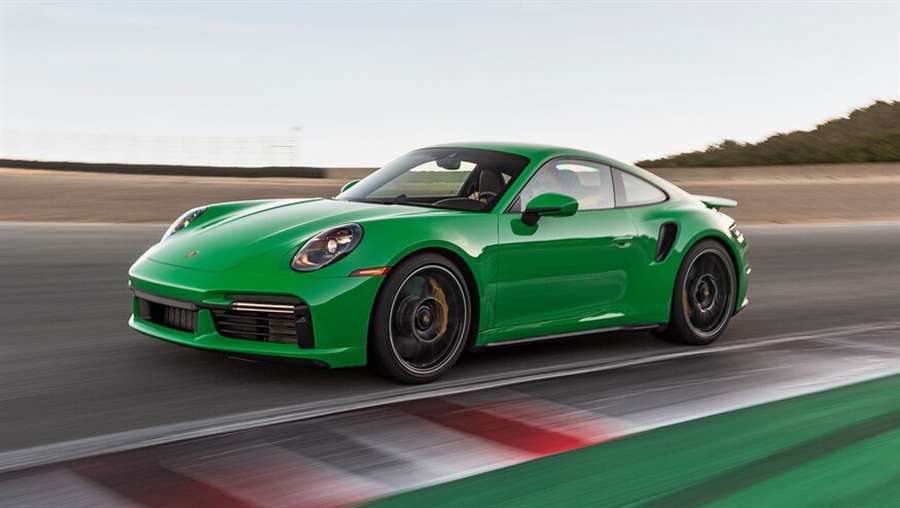
If you haven't noticed, we don't do ties at MotorTrend; every comparison has to have a winner. To find one, I asked road test editor Chris Walton to go to the electron microscope and scrutinize the results. Our 20-hertz Vbox GPS data logger measures a vehicle's position 20 times per second to give us extremely accurate results, but we round to the nearest 10th of a second for our published results. This rarely causes an issue, but it matters in this case.
Direct from the data file, the new 2021 Porsche 911 Turbo S needs only 2.348666958 seconds to hit 60 mph from a standstill. The Tesla was infinitesimally quicker, needing just 2.275507139 seconds. Holster your calculator, that's a difference of just 0.073159819 second. An actual blink of the eye takes 0.1 to 0.4 seconds, per Harvard Medical School.
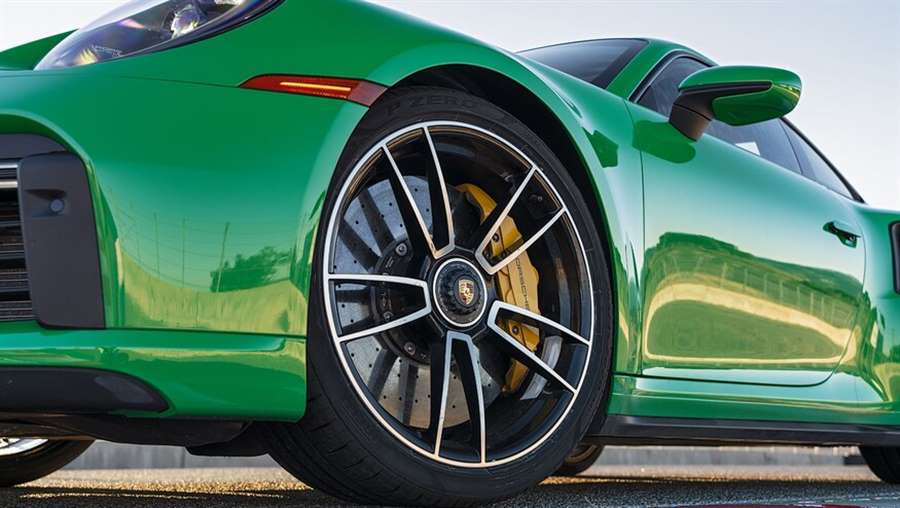
It's worth noting that although the Vbox gives data to the ninth decimal place, the company officially certifies the accuracy to 0.01 second. That puts the Tesla at 2.28 seconds and the Porsche at a 2.35-second time that rounds down.
Porsche Vs. Tesla
Don't think this means the Tesla will win a proper drag race, though. The Model S gets the holeshot, hitting 30 mph in 0.87 second to the Porsche's 0.94, but it starts to lose steam at higher speeds. A 10.5-second quarter mile at 125.0 mph is ludicrously quick for a production car on street tires, but it's not quick enough to beat a 2021 Porsche 911 Turbo S at the test track. The Porsche might launch fractionally softer, but once it's moving the 911 will run down the Tesla before the finish line with a 10.3-second quarter mile and a trap speed of 132.3 mph.
It's worth dwelling on the spec chart a little longer here. The quickest production cars MotorTrend has ever tested are a 680-hp, 4,891-pound battery-electric sedan, and now a 640-hp, 3,628-pound twin-turbo six-cylinder coupe. Neither is the lightest in its class by a long shot nor are they even close to being the most powerful. Neither wore the world's stickiest street tires: the Tesla rode on Michelin Pilot Super Sports, the 911 on Pirelli P Zeros. What these cars are, then, are two of the best-engineered and best-programmed, factory-built, all-wheel-drive, street-legal drag racers in America.
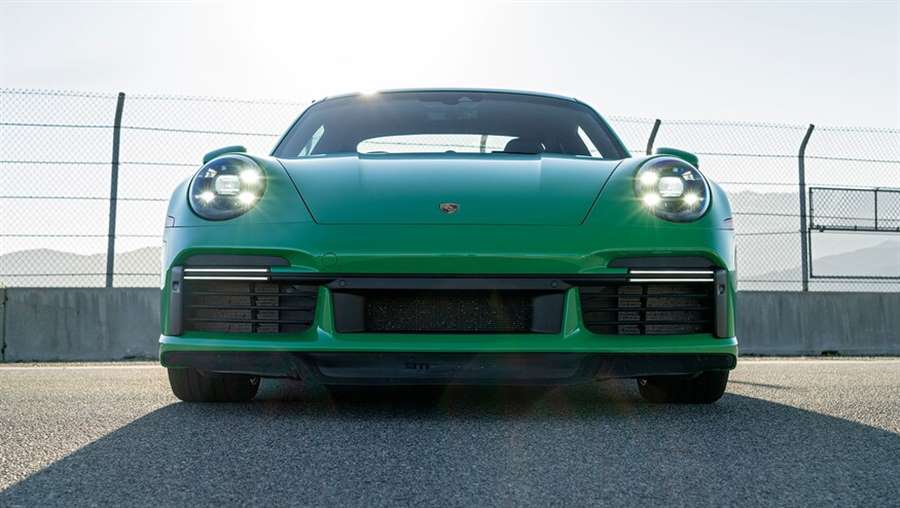
Of course, the 2021 Porsche 911 Turbo S we tested does a lot more than drag race. Keep looking down the chart, and you'll see it stops from 60 mph in 97 feet, which is supercar territory but not a record. Remember, that's on plain old P Zeros, not Corsas or Trofeos, which makes its performance more impressive.
The skidpad and figure-eight tests tell the same story. Achieving 1.10 average lateral gs on the skidpad is a crazy number, as is a 22.5-second figure-eight lap at 0.96 average cumulative g. Those are both in the top 10 all-time, again on regular Pirelli P Zeros. Put this monster Porsche Turbo S on a racetrack such as WeatherTech Raceway Laguna Seca, and, despite its tires, it'll put down a lap time within 0.7 second of a 711-hp Ferrari F8 Tributo.
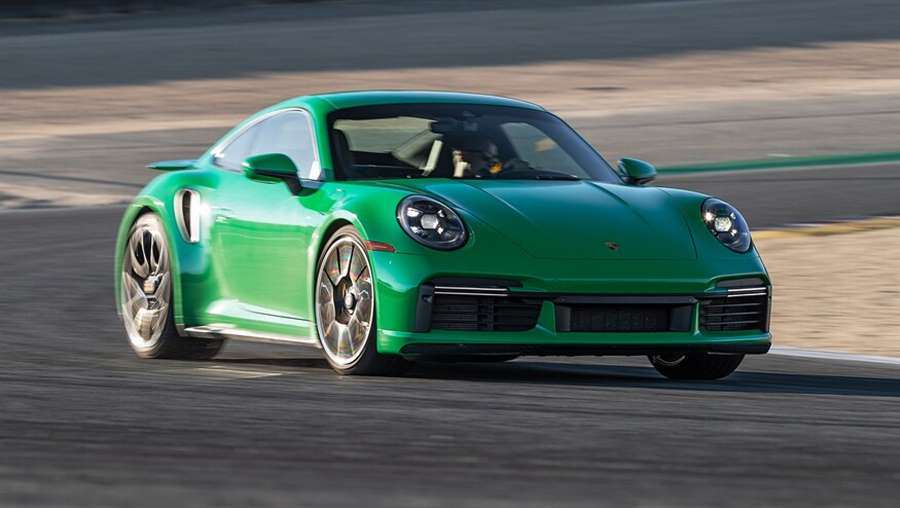
(Nearly) Unmatched Performance
What this 2021 Porsche 911 Turbo S is capable of when tested to its limits, objectively speaking, is nearly unmatched. And anyone who can come up with $204,850 can walk into a Porsche store today and buy one (technically, $211,380 including just the performance options on our test car).
Subjectively speaking, it's nearly as superlative. On the road, the Turbo S is pure magic. The way it moves feels organic, like the way an athlete moves, or a wild animal. Drivers of every skill level are immediately comfortable driving way, way over the speed limit—and right to their, and the car's, limits. Read that again. A car that comes within a hair of setting performance records across the board is also incredibly confidence-inspiring and easy to drive quickly, despite relying on a strong sports-car tire rather than a proper supercar tire.
The 2021 Porsche 911 Turbo S does have a limit, though. Blame the tires, blame that Turbo genealogy, but for as much Porsche GT personality as it has on the street, the 911 Turbo S loses something on the track. It becomes a bit cold and clinical on a road course. Would a set of Trofeos or Pilot Sport Cup 2s fix that? We'd love to find out. Either way, this test proved it already nips at the heels of the mighty, previous-generation 911 GT2 RS. Give it real running shoes, Porsche, and let's find out.
Source: motortrend
2020 Porsche 718 Boxster T Handles It All
Porsche's special-edition Boxster bundles corner-carving goodies but doesn't forget about the commute.
Sports cars don't ride this well. After a few miles, disbelief turns to awe. You see, this Porsche Boxster T is aimed directly at the lunatic fringe of car buyers who crave the sportiest handling in a base Boxster. We had a short drive of a European-spec Boxster T in 2019, but we've now spent a few days surfing the potholes and shattered asphalt of our home turf in the United States version. And an apex-slaying suspension just isn't supposed to be this livable.
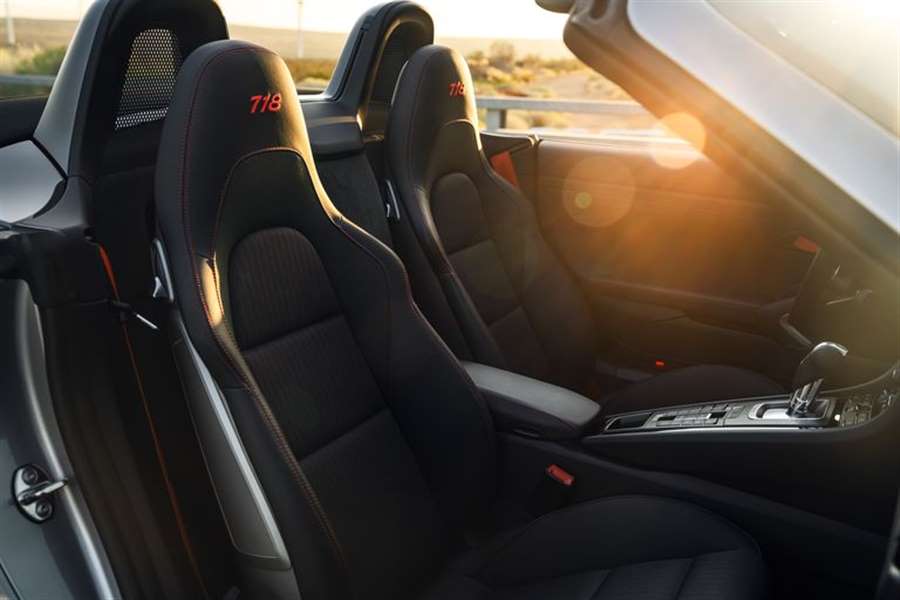
Porsche makes all of the Boxster's chassis goodies standard in the T and then sprinkles some Ferry dust on the whole thing. The suppleness is surprising considering the T model is equipped with a sport suspension that drops the Boxster nearly an inch (20 mm) and includes 20-inch wheels with tires whose sidewalls appear to offer all the impact protection of a leather helmet. And yet, the Boxster T's ride compliance betters that of many sports sedans. No crash, no smash, no harshness.
Vital to the ride quality are the sport package's standard adaptive dampers—PASM in Porsche language—that adeptly smooths those high-frequency jolts that tend to discombobulate performance cars. A button next to the shifter allows the driver to tighten up the dampers' responses, but there's no real reason to take them out of Normal mode since they continuously adapt to how hard you're driving and whatever bad breaks the road throws at them. But, if you want to ruin the ride, go right ahead and select Sport.
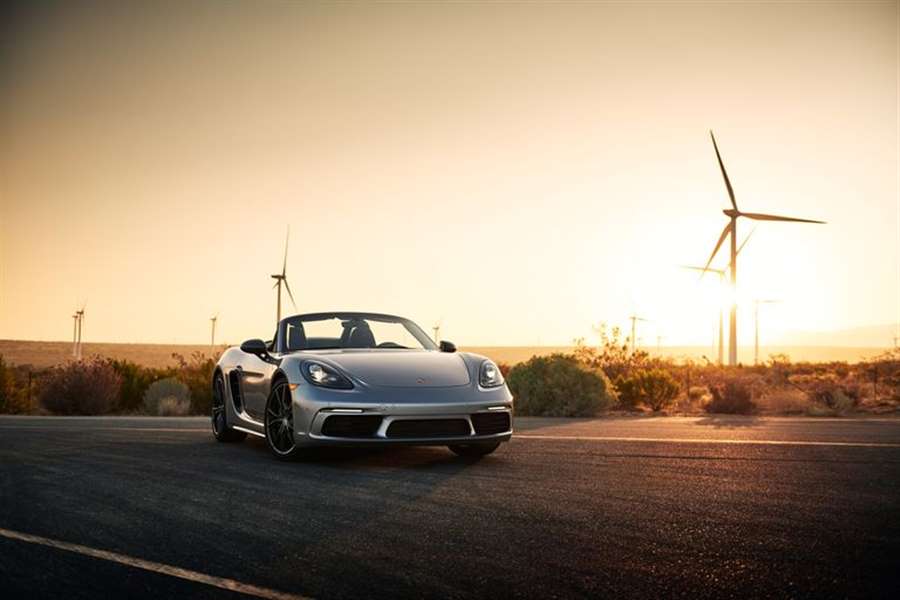
If that over-the-road grace is surprising, the Boxster T's handling isn't. Like a regular Boxster or Boxster S, the T's moves and primary controls foster a close connection that shrinks the car around you. In addition to the sport suspension and 20-inch wheels, the T model makes a few other optional bits standard fare. Every Boxster T comes with brake-based torque vectoring that helps rotate the car into corners and active engine mounts that stiffen or soften to help keep engine motions from upsetting the handling.
A small-diameter sport steering wheel with a drive-mode selector knob is also standard. As precise as the atomic clock, the steering sends all the right signals from the tires and road without any kick or ugliness.
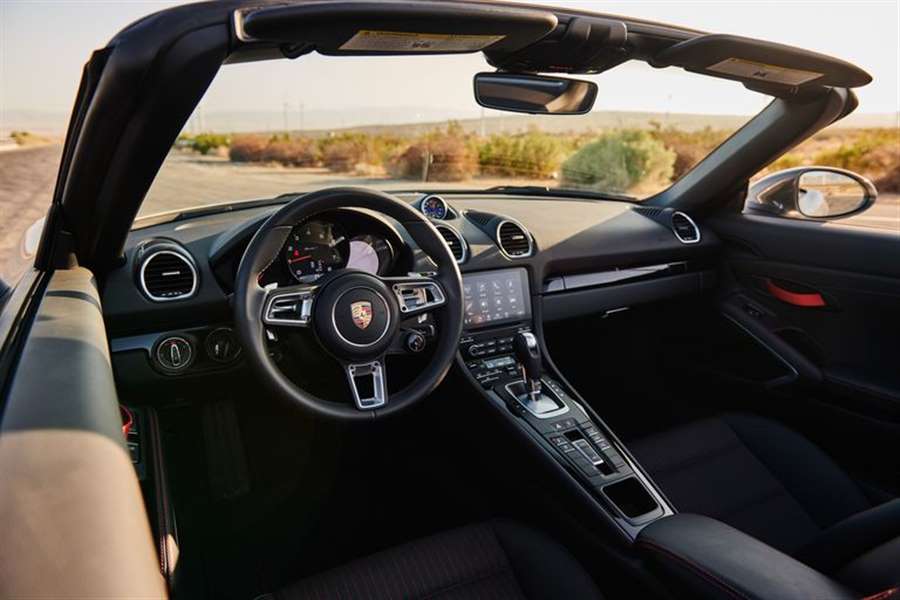
What the T doesn't add is more power. Bolted in behind the driver is the same 300-hp 2.0-liter flat-four that has powered the base Boxster since 2017. The 2.0-liter pulls hard from low rpm once the turbo lights things up, and the engine delivers more than enough acceleration to dispel your regrets over foregoing the 350-hp Boxster S. The flat-four issues a guttural grumble, especially at idle, but the sound improves when zinged to the 7500-rpm redline. The engine will never be confused with a BMW inline-six—or even Porsche's flat-sixes—but tries to compensate for its inability to carry a tune with an angry exhaust note.
Coupled with the optional seven-speed dual-clutch automatic transmission ($3730), we expect the Boxster T to get to 60 mph in 3.8 seconds, the same time as a mechanically identical PDK Boxster we tested back in 2017. All automatic T models will be able to repeat that performance as many times as you please, since they come standard with the Sport Chrono Package that adds the all-important launch-control function. Left foot on the brake pedal, floor the accelerator, release the brakes, and there you have it: the perfect launch, easy enough to merit an infomercial.
Still, we'd skip the dual-clutch automatic in favor of the six-speed manual. Not only is it's less expensive, but it's more in keeping with the driving-joy ethos of the T. In our testing of the non-T Boxster manual, the DIY gearbox runs to 60 mph in 4.3 seconds. Plenty quick.
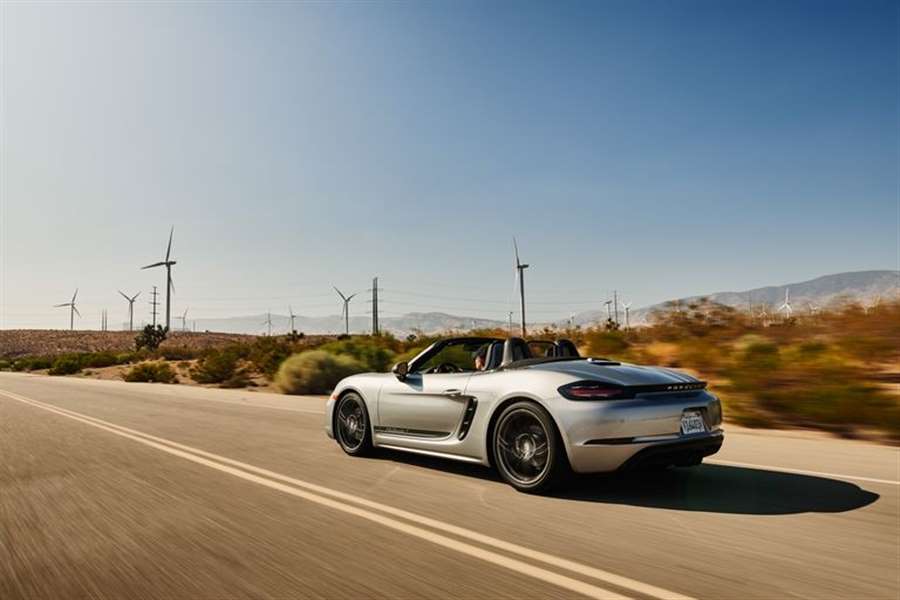
Some Boxster buyers might wonder about the T's cloth and leather seats. Porsche's puritanical models of the past—the 1988 911 Club Sport, the 1992 911 RS America, and the 1993 911 Speedster—came with pinstriped cloth upholstery, and the T's cloth seats speak to its mission statement. Cloth is grippier than leather, so the thinking is that since you love corners enough to buy this car, you'll want the cloth holding your butt in place. Fabric door pulls replace door handles, another nod to Porsche's racing heritage and the GT models. Our test car wore the T Interior Package ($2770) that adds contrasting stitching throughout and a few bits of trim. At $2770, the option seems expensive for the minor dress-up.
The Boxster T starts at $69,850, or $8900 more than the base Boxster. With one exception, it's possible to add the T's many chassis options to a base Boxster, and the price works out to be about the same as the T. What you miss out on are the T's even lower Sport suspension (a 0.8-inch drop versus 0.4 inch) and its heritage-inspired cloth interior and door pulls. And, while you can build a Boxster to mimic most of the T's goodies, it's unlikely you'd ever find one on a dealer lot. By bundling these options in a new model, dealers can easily order an enthusiast special, and enthusiasts can skip the special order from Stuttgart. The T makes a handling-optimized Boxster easy to find, and its ride makes it easy to drive every day.
Source: caranddriver.com
2021 Porsche Panamera Turbo S E-Hybrid Sport Turismo: Turbo Juiced to 690 Horspower
Highlighted by the Sport Turismo wagon model, Porsche's updated Panamera Turbo S E-Hybrid gains power, refinement, and 30 percent more electric range.
Recent headlines regarding Porsche's four-door cars have naturally gravitated to the company's new Taycan electric sedan. And given the performance of the 750-hp Taycan Turbo S—the most powerful Porsche currently available—that hype is understandable. But Porsche has partially electrified its Panamera sedan and Sport Turismo wagon (and Cayenne SUV) for several years now with some spectacular results. For the 2021 model year, a range of updates comes to the second-generation Panamera lineup, with the most anticipated of those changes being an uptick in power, performance, and refinement for the range-topping Turbo S E-Hybrid models.
Although the Panamera Sport Turismo has been around since 2018, the wagon remains a rare bird, even in car-crazy Los Angeles. Our 2021 Turbo S E-Hybrid test car has been collecting lustful stares all morning, even from a few Tesla drivers. Exterior changes are subtle. Aside from new wheel designs, the previously optional SportDesign front fascia is now standard; a reconfigured SportDesign package, with or without carbon fiber, is in the works. To bring the car's rear end in line with the look of the brand's fresher sports cars and SUVs, a continuous light strip now spreads across its tail. The only upgrade inside is a new steering wheel with simplified audio and information controls. Our German-spec example was not fitted with a panoramic glass roof, but it will remain standard on United States models.
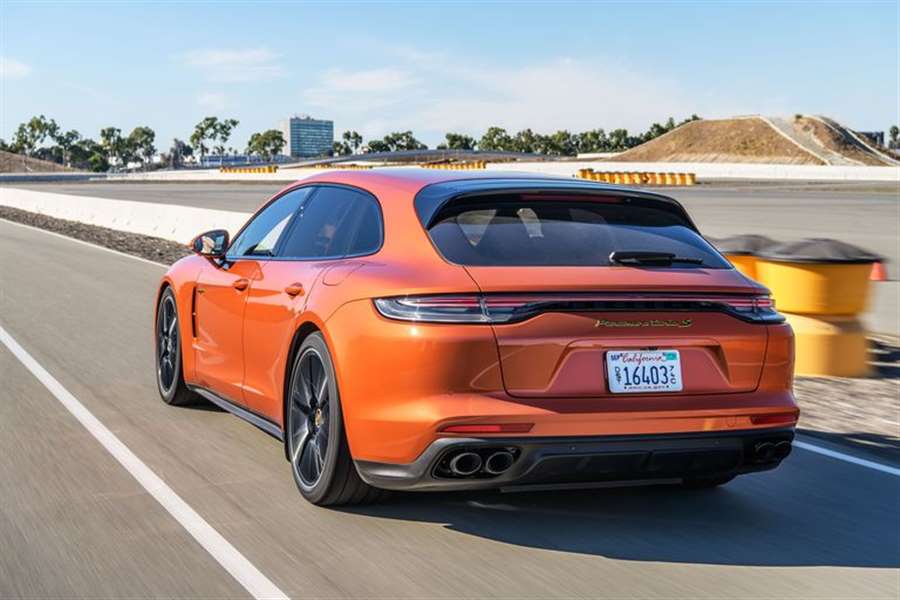
Mechanically, things haven't changed much either. The plug-in Turbo S E-Hybrid retains its all-wheel-drive system, twin-turbo 4.0-liter V-8, and an electric motor integrated into its eight-speed dual-clutch PDK automatic transmission. Engine calibration enhancements have increased the V-8's output from 550 horsepower to 563. Peak torque stays at 567 pound-feet, and the electric motor contributes an additional 134 horsepower and 195 pound-feet. As a result, combined horsepower climbs from 680 to 690. And with 642 pound-feet of total torque plus a low 5.97:1 first gear, hard launches strain back muscles and rearrange bodily fluids more than ever. Tummies twizzle.
Porsche says the updates shorten the wagon's 60-mph dash from 3.2 seconds to 3.0 flat, but we've already clocked a 2.7-second run from a 2018 Turbo S E-Hybrid Sport Turismo, which also covered the quarter-mile in 11.0 seconds at 126 mph. We won't know for sure until we get the updated car to the test track, but the 2021 model should shave a tenth of a second from those times. Porsche also claims a 196-mph top speed, which is an increase of 4 mph. We'll buy it.
The most significant powertrain upgrade is an increase in battery capacity from 14.1 kWh to 17.9 kWh, which ups the Turbo S E-Hybrid's all-electric driving range by 30 percent. On a full charge in the E-Power driving mode, there are now enough electrons for about 20 miles of travel. But get aggressive with the throttle, and the V-8 fires up quickly to deliver a boost of power.
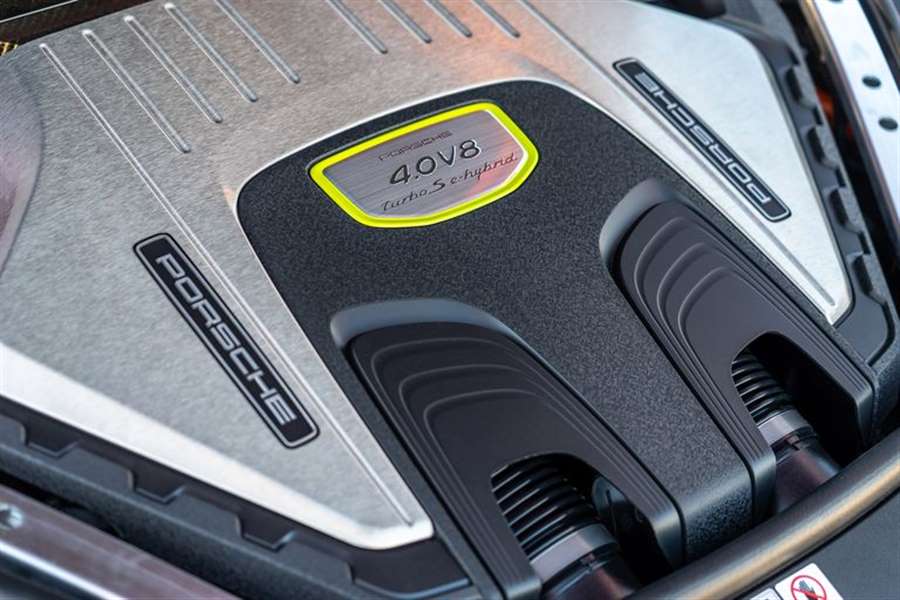
Hybrid mode maximizes the system's efficiency by blending both power sources with remarkable refinement, running the engine only when necessary to either charge the battery or answer your request for harder acceleration. "We spent a lot of time under the hood optimizing engine and suspension systems to enhance the bandwidth between performance and comfort," said Thomas Friemuth, vice president of the Panamera model line. EPA fuel-economy estimates aren't finalized yet, but the current car's 48-MPGe and 20-mpg combined ratings aren't expected to change.
Sport and Sport Plus modes keep the engine running and retune the transmission for more immediate response. They also dial up the volume of the active exhaust system, giving the V-8 a thumpy idle and a pleasant growl. The Turbo S E-Hybrid's adjustable air springs use the same hardware as before, but ride quality has been improved, and the range between the suspension's three settings have been broadened. Normal is a bit softer than before and Sport Plus a bit stiffer, but each setup retains the relatively supple ride quality and excellent body control that we've previously been impressed with.
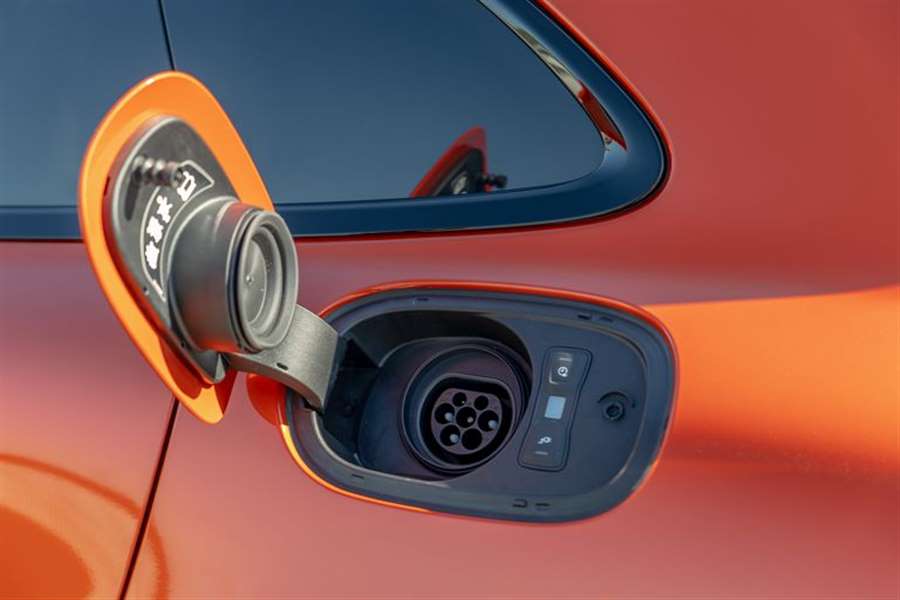
The Turbo S E-Hybrid's regenerative braking system helps replenish the battery pack rather quickly. A half hour of moderately quick driving in the hills above Malibu increased our indicated electric range from 7 to 21 miles. Porsche has also made some adjustments to the Panamera's Porsche Dynamic Chassis Control Sport system, which governs the car's active anti-roll bars, torque-vectoring system, rear-axle steering, and more. There's more steering feel than in other big sedans and wagons, and a new electromechanical brake booster seems to have eliminated the brake pedal's previously squishy transition from regenerative to friction braking. Massive carbon-ceramic rotors with Acid Green-painted calipers are still standard.
Porsche continues to mount the battery pack under the Turbo S E-Hybrid's cargo floor to help balance the weight of the chassis, which helps lend the car incredible grip and agility. You can notice some road noise from the updated 21-inch Michelin Pilot Sport 4 S summer tires (275/35R-21s in front and 325/30R-21s in the rear), but their impressive grip is a fair tradeoff. Despite weighing around 5300 pounds, we recorded 0.99 g of stick on the skidpad from the previous version of this electrified wagon. While it does feel big and heavy on the road, it's also seriously quick, stupendously stable, and it simply explodes from corner to corner.
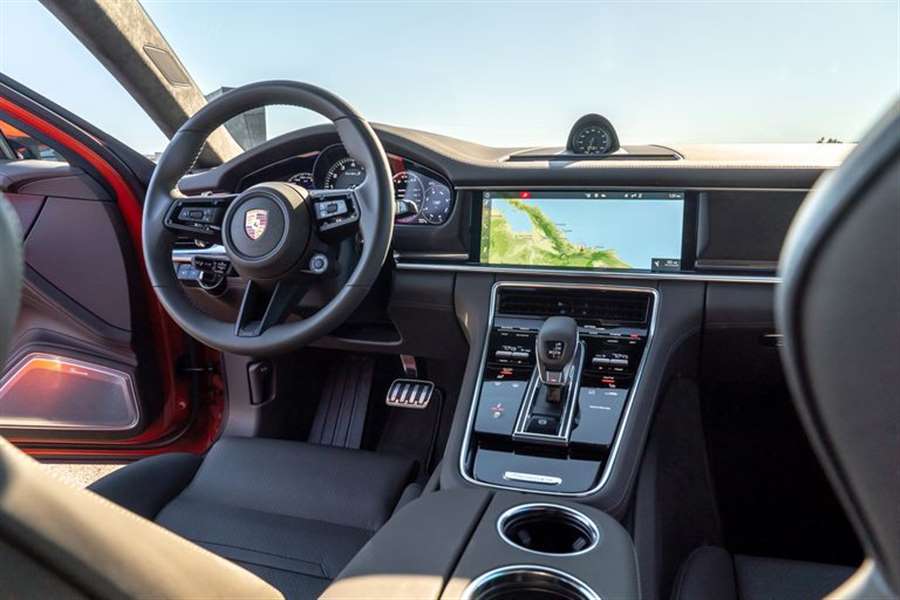
Pricing for Turbo S E-Hybrid versions of the Panamera and Panamera Sport Turismo will be released closer to the cars' availability in spring, but we'd expect slight increases over their current base prices of $189,050 and $193,050, respectively. With its improved performance and additional refinement, we could make a case for the top Sport Turismo model as Porsche's best all-around car. Sure, both the electric Taycan Turbo S and the updated 911 Turbo S are quicker, and we'd rather have one of the company's GT sports cars for pure driving joy. But none of them combines speed, comfort, efficiency, and versatility as stupefyingly well as the Panamera Turbo S E-Hybrid Sport Turismo. It may be the perfect ride for the deep-pocketed enthusiast with a family and a single parking space.
Source: carandriver.com
Tested: Base 2020 Porsche 911 Is a Worthy Six-Figure Sports Car
Porsche's entry-level 911 doesn't have a big horsepower number, but it has the performance goods to justify its price.
12/1/20 UPDATE: This review has been updated with test results for a 911 Carrera equipped with the automatic.
This is very likely the least expensive new Porsche 911 you'll ever lay eyes on. At $106,290, it has a mere $7540 in options, which, if you don't believe is a picture of restraint, go spend a few minutes on Porsche's online configurator. This car had just four add-ons: a Sport Exhaust system ($2950); the Sport Chrono package, which includes launch control ($2720); Lane Change Assist, which most other automakers call blind-spot detection ($1060); and Sport Seats Plus ($810). Let's see if the extreme low end of the 911 lineup lives up to six-figure sports-car expectations.
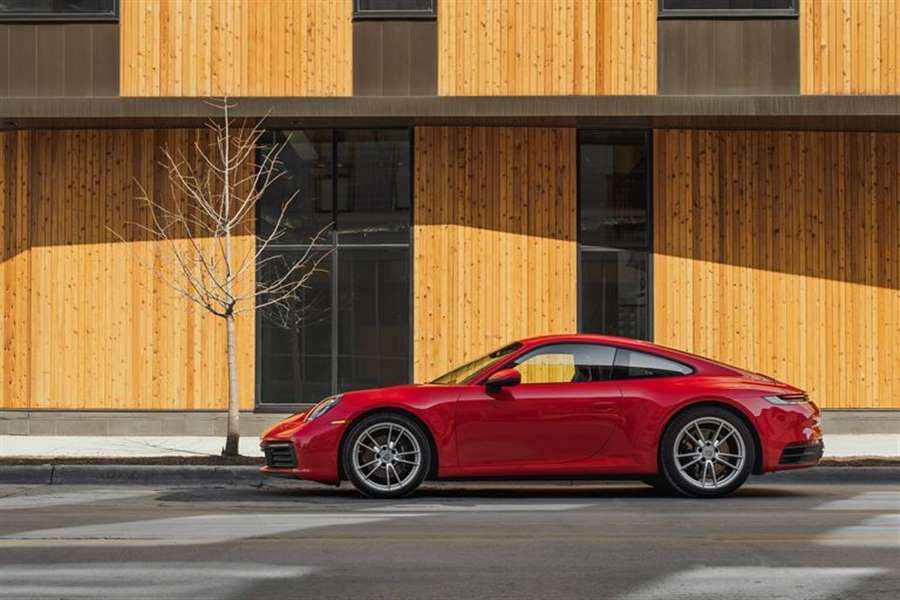
A peak horsepower figure of only 379 from its twin-turbo 3.0-liter flat-six is not a great start toward credibility. A V-6 Camry also has a power figure that starts with a 3 yet costs a third as much, and there are many examples of more for less when it comes to maximizing underhood output.
HIGHS: Legit performance, curb weight has been kept in check, outstanding highway fuel economy.
But the 911 is deceptive. In the new-for-2020 992-generation 911, an eight-speed dual-clutch automatic transmission—PDK in Porsche parlance—replaces the previous seven-speed unit. Its general brilliance in terms of both quickness and smoothness is familiar, although the car we drove did bobble a couple of shifts before it was fully up to temperature. Also familiar is Porsche's simple and extremely effective launch-control function, which revs the engine to 5000 rpm before dropping the hammer and perfectly slipping the clutch. The engine speed never drops below 4000 rpm as the car makes a smooth and very swift departure. And it is happy to repeat this launch-toward-the-horizon routine just as often as you'd like. Our test car made consistent, repeated passes of 3.2 seconds to 60 mph and 11.5 seconds through the quarter-mile, which are 0.1- and 0.3-second quicker, respectively, than the 2017 911 Carrera with the PDK that we previously tested. Those results also make the base car just 0.3-second slower than the 443-hp Carrera S in both measures.
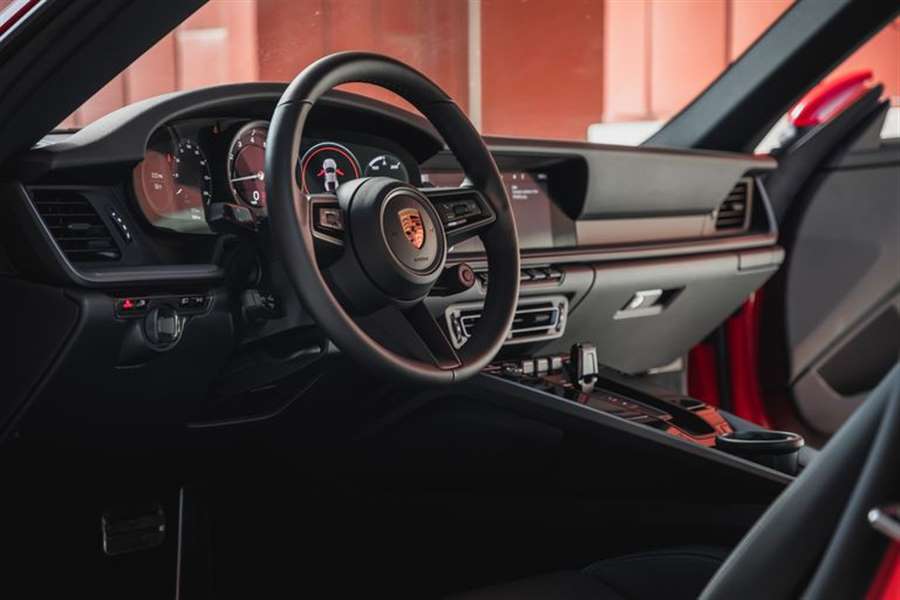
Besides the phenomenal performance bargain that is the latest Chevrolet Corvette, any sports car that outruns the 911 costs substantially more. One reason for its more-with-less performance is that the 911 has kept its weight gain in better check than many of its peers. This car weighs just 57 pounds more than before, making it roughly 300 pounds lighter than today's Corvette. Despite adding inches and turbos, the 911 doesn't weigh even 100 pounds more than the 15-year-old 997-generation cars.
Excellent Fundamentals
In addition to straight-line acceleration, the fundamentals of a great sports car are all here. The 911's buildup in steering effort is just right, and it's constantly atwitter with road-surface information. This is electrically assisted steering done properly. Interestingly, the lid of the center console bin is surprisingly talkative, too. Resting an elbow there intercepts the communicatory tingles of what the car happens to be trampling over at the moment. The 911 also continues to prove the point that seats don't need a lot of adjustments. The headrest on our lightly optioned car is fixed, and there's manual fore-aft, and power adjustment for height and seatback angle and bottom height. That's it, and yet they fit both the short and the tall commendably well. The additional bolstering of the $810 Sport Seats Plus option is soft enough to not be restrictive nor fatiguing on longer drives. Brake feel is nigh on perfect, with telepathic responses and no lost motion. Aided by its rear-heavy weight distribution, the 911's stopping distances of 139 feet from 70 mph and 277 from 100 mph are up there with the best of the best.
LOWS: Base interior has some cheapness, even lightly optioned 911s cost six figures.
We appreciate that changing the 911's drive mode doesn't cause the steering effort or ride control to go overboard in either direction. The tweaks in its calibrations are subtle, and there isn't a bad mode. The only element that makes us roll our eyes is the three artificial-sounding pops that accompany a lift of the throttle in Sport mode, which disappear in Sport Plus. Both sporty modes raise the idle speed from 600 to 800 rpm for a little extra responsiveness. Those who listen for it can hear the turbo hiss from the blow-off valve, but this latest twin-turbo 3.0-liter retains the gritty flat-six undertones that we love, no doubt emboldened by the optional Sport Exhaust on our car. Every 911 has a little piece of the 9000-rpm GT3 rock.
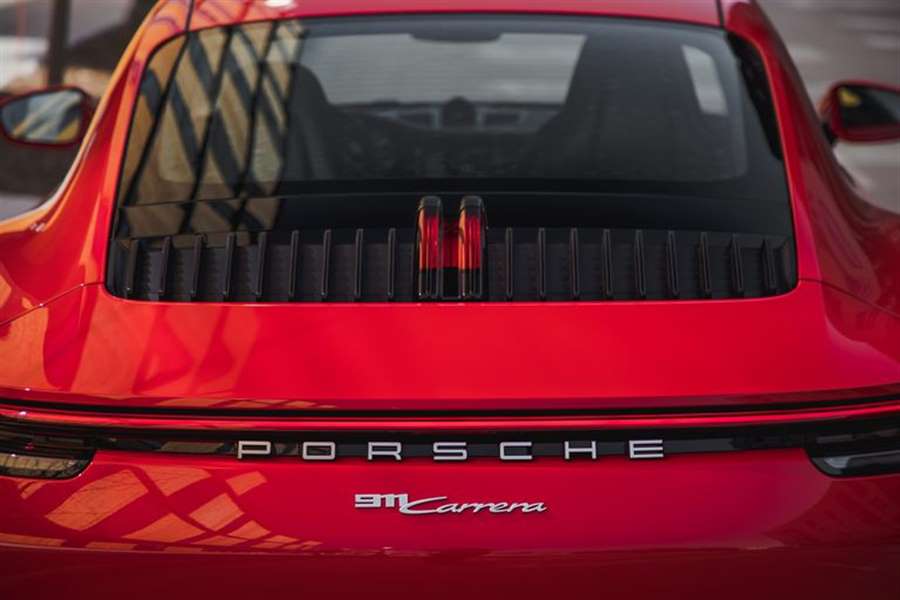
As far as sports cars go, the 911's ride smoothness is reasonable. But on under-maintained roads, it can get clompy over bumps and pavement seams, especially with the narrower sidewall and higher-pressure rear tires. Remember that the 992 went to a staggered-diameter wheel arrangement with 19-inch fronts and 20-inch rears as standard and available 20/21s.
When not wailing, the engine settles below 1800 rpm at 75 mph, allowing for an outstanding 33 mpg on our highway fuel-economy loop, the best result from any 911 we've ever run. That's 2 to 3 mpg better than its 992 S and 4S siblings and also 3 mpg better than the best previous-gen 991 (a Carrera 4 automatic). Despite the improved real-world fuel economy, for some unknown reason the EPA values took a huge hit in the 992 generation, dropping from a 30-mpg highway estimate to 24 for a base car with the automatic transmission.
Entry-Level Innards
Base also means a uniformly grained black interior, which, although soft to the touch, is not as convincing in the six-figure space as are the leather-upgrade options that start at $2840. The only thing breaking up the monotony is the knurled gray trim extending from the door handle and on the ridge under the center screen running across the dash.
Surrounding the shifter is a large area of stark piano-black trim, which no amount of money can fix, as even the $204,850 Turbo S doesn't fill in any of its blankness. This is a carryover from the four-door Panamera, which populates this area with controls. There are window-switch blanks, too, as Porsche is deploying shared hardware across car lines with different door counts. A big, beautiful mechanical tachometer remains in the middle of the 911's now otherwise digital gauge cluster. But we miss the depth of the previous mechanical gauges that flanked it.
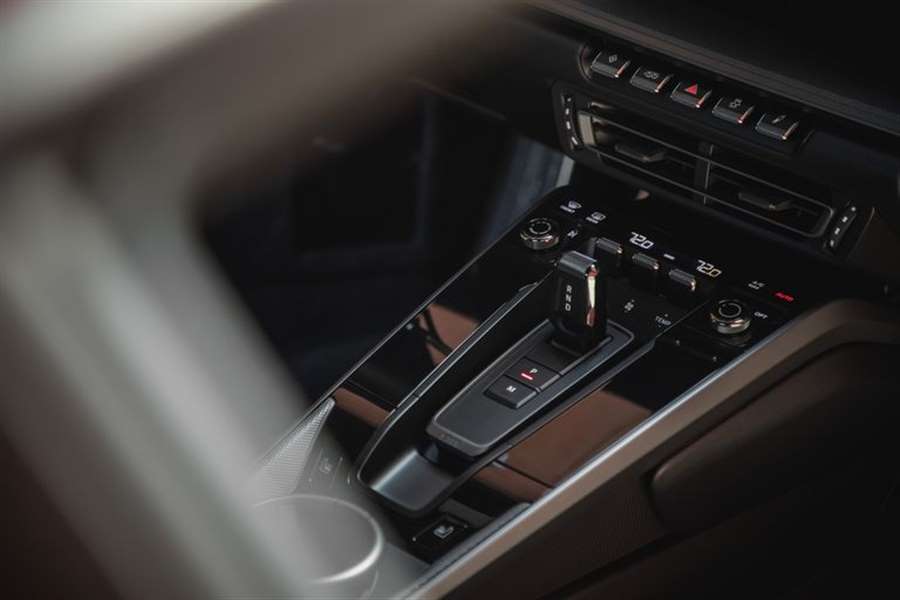
Also new on the 992 are power door handles that pop out to facilitate opening. Our early-build car, however, didn't have the $550 Comfort Access option that prompts them to present themselves automatically when you approach the car. Having to get the fob out of your pocket to actuate the handles and then squirreling it right back away because keyless ignition is standard is the kind of slight annoyance that we think people who plunk down $100K on a car will find obnoxious. Porsche apparently agreed, as it made Comfort Access standard mid-way through the 2020 model year.
Of course, the 911 retains its familiar small rear seats, an all-important point of justification to wannabe sports-car buyers with small children. That means in addition to outperforming and outdriving most of its peers, it also outseats them. Yes, even the base 911 resoundingly stacks up as a six-figure sports car. Although we would feel compelled to upgrade the interior a little if it were our money.
Source: caranddriver.com
New Porsche Boxster GTS 4.0 PDK review
Can you have more fun for £70,000 than you do in the new Porsche Boxster GTS PDK? We think not.
Verdict
Even faster than its manual sibling, the Boxster GTS 4.0 PDK is one of Porsche’s most usable, fun cars. It feels perfectly sized for British roads and handles superbly, and the dual-clutch automatic gearbox doesn’t take away an emotional appeal that the regular four-cylinder Boxster simply cannot match. With near-supercar performance and a well-finished cabin, this car looks a bargain, even at just under £70,000.
We were totally bowled over by the Porsche 718 Boxster GTS 4.0 when we tried the flagship roadster with a manual-transmission earlier this year. Now it’s time to try the version which appeals less to purists but may well sell in greater numbers: the 718 Boxster GTS 4.0 PDK.
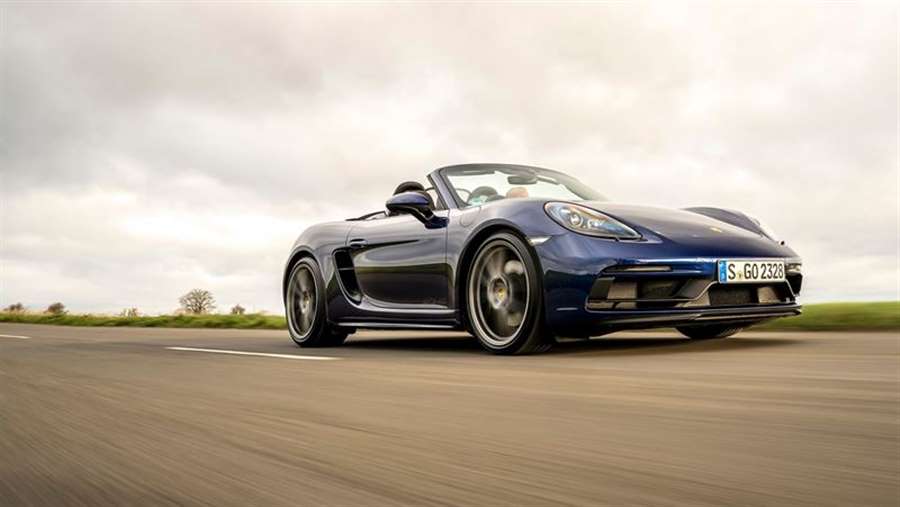
Slotting the seven-speed dual-clutch transmission into the range-topping variant of its entry-level convertible might look a brave move on Porsche’s part - not least because it’s going to want more money for it (the car costs £68,643, a premium of £2,303 over the manual). But it not only opens up extra potential sales; it also creates a little extra wriggle room on the engineering front.
That’s because the PDK transmission is able to deal with a little more shove than the manual - and Porsche has, conveniently, passed this gain on to the consumer. So while the basic power output remains the same as the GTS 4.0 manual, at 395bhp, you get 430Nm of torque instead of 400Nm. And as a result, the fast-shifting auto is even quicker - by a full half a second, in fact, from 0-62mph, at just 3.8 seconds. Let’s stop for a moment and just acknowledge that figure: a Boxster that’s sub-four seconds from 0-62mph.
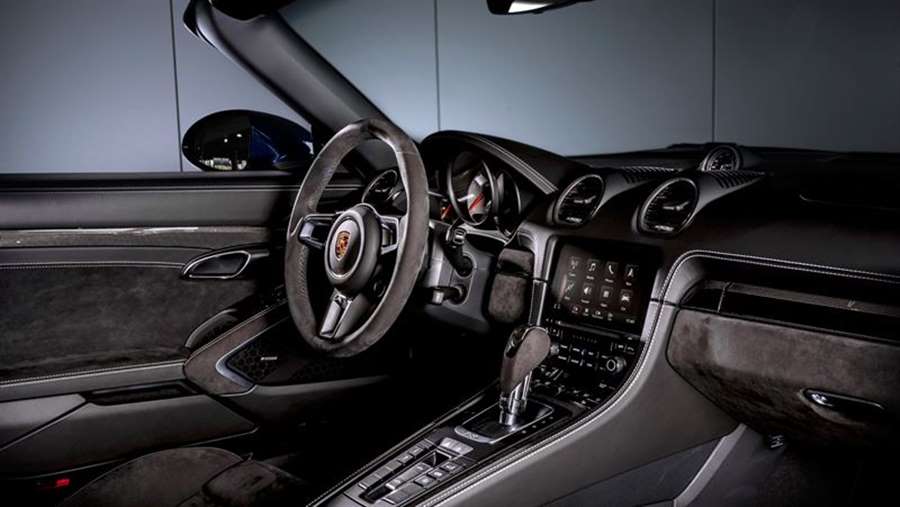
At this point you may be expecting us to start chipping away at the PDK experience by stressing the fact that it’s not as involving as the Boxster manual. Of course it can’t quite match the experience of the six-speeder. But that doesn’t mean it ever feels inferior; find the right stretch of road and this remains one of the standout models in Porsche’s (very strong) line-up.
The powertrain is so smooth and linear, in fact, that at first you may miss the absence of the sort of kick in the kidneys that you get when a turbocharger spools up. But then you’ll look down and realise that, with the revs rising towards the heady peak power delivery point of around 5,000rpm, you are, in fact, gathering velocity at a shocking rate of knots.
The GTS spec gets a sports exhaust as standard and it works beautifully with the six-cylinder engine, delivering a booming note from around 4,000rpm and then a proper scream once it’s really on song 1,000rpm later. It’s intoxicating - and while you may miss the ability to heel and toe to your heart’s content, believe us when we say that over a deserted stretch of road, you won’t find yourself feeling anything less than fully occupied in the PDK.
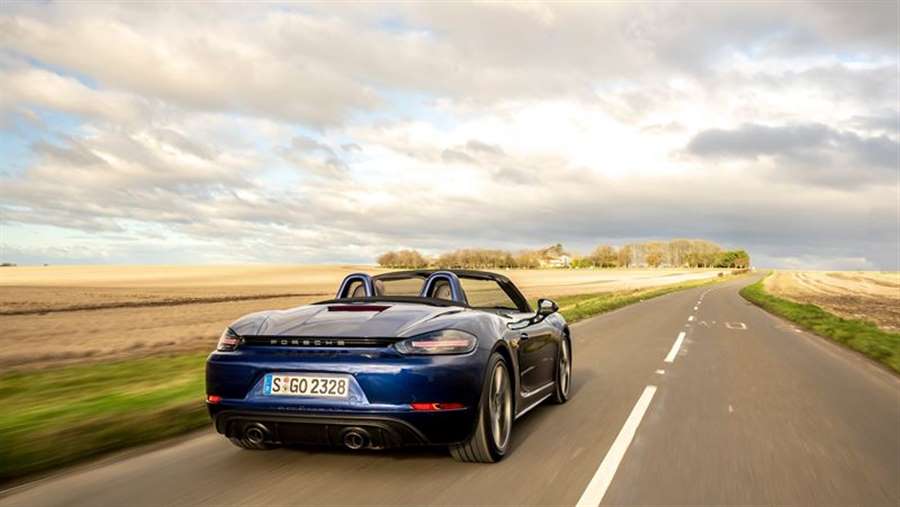
This car is about much more than its engine, too. The Boxster’s chassis has always been nicely judged and the adjustments to cope with the extra power have not played around with that, so you get a roadster that phases out the worst road imperfections, responds instantly to inputs through the satisfyingly weighty steering, and stays incredibly flat mid-corner, with exceptional control that belies its open-topped body.
If you do want to cover long distances in your GTS, then, you’ll find that it has that incredible duality that the best Porsche models usually possess - so it’ll cruise along in comfort, with only tyre roar (possibly the car’s biggest flaw) and a little bit of wind noise from around the roof seal at the A-pillar to complain about.
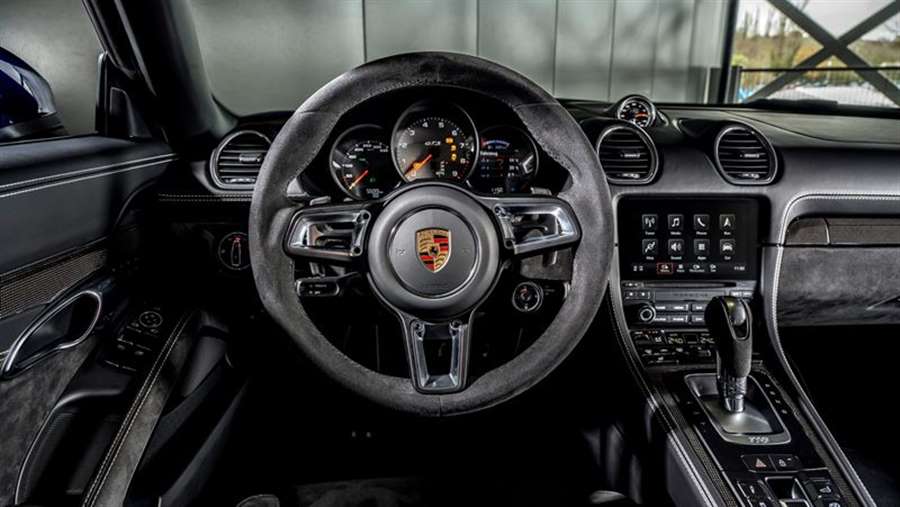
The cabin is beautifully finished and, by Porsche standards, well equipped as standard - although of course, there remains huge scope to add thousands of pounds to your price tag via the comprehensive options list (our German-spec, left-hand-drive test vehicle was taken to a cool €105,000). The fascia layout still feels reassuringly driver focused, although the infotainment system is now firmly eclipsed by what you can get in a 911 - and it’s worth noting that Porsche only supports Apple smartphone connectivity; Android Auto isn’t even an option.
Source: autoexpress.co.uk

